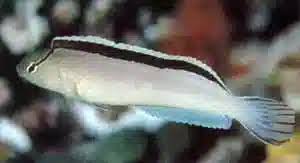The Symbols of Dragons in Traditional Chinese Clothing: A Deep Dive into Cultural Significance

In the rich and ancient culture of China, few symbols hold as much significance as the dragon. Revered for thousands of years as a symbol of power, authority, and good fortune, the dragon’s influence extends beyond religious beliefs and mythology into various aspects of daily life, including traditional Chinese clothing. The intricate and beautiful designs of Chinese garments are adorned with dragon motifs, each representing a deeper connection to the imperial system, cosmic forces, and cultural identity.
The image of the dragon is intricately woven into the fabric of Chinese history, influencing royal attire, festive garments, and ceremonial costumes. Whether embroidered on the silk of the emperor’s robes or adorning the clothing of everyday citizens, the dragon serves as a potent symbol that reflects both the wearer’s status and the cultural values of China. In this article, we will explore the dragon’s symbolic role in traditional Chinese clothing, focusing on its use in imperial attire, its cultural symbolism, and how it has evolved over time.
1. The Dragon as a Symbol of Imperial Power
The dragon is most famously associated with the Chinese emperor, who was often regarded as the Son of Heaven. In ancient China, the emperor’s garments were a clear visual representation of his divine authority. The dragon, being a celestial creature, was used as a symbol to reflect the emperor’s divine right to rule. The dragon motifs on the emperor’s clothing were not just decorative but served to emphasize his connection to both the heavens and the earth, marking him as a godly figure with the responsibility to maintain cosmic and societal order.
The Five-Clawed Dragon: A Royal Symbol
One of the most recognizable symbols in Chinese imperial attire is the five-clawed dragon, which was exclusive to the emperor and his family. The use of the five-clawed dragon signified the emperor’s supreme power. It was a highly regulated symbol, reserved only for the imperial court, and no one else could use it without facing severe punishment. This distinctive feature of the dragon was not just an ornament but an assertion of the emperor’s exclusive right to the throne.
Embroidered on the emperor’s robes, the five-clawed dragon became a hallmark of imperial authority. These dragons were typically depicted in a dynamic, swirling pose, symbolizing the emperor’s active role in maintaining order, prosperity, and stability across the empire. The intricate design of the dragon, often with its body coiled in graceful motion, symbolized the emperor’s control over the natural world and his connection to the heavens. The color of the dragon also played a role in representing different aspects of the emperor’s rule. For instance, gold dragons were a sign of great power, while red dragons could signify the emperor’s martial prowess.
2. The Role of the Dragon in Royal Court Clothing
The dragon’s presence was not confined solely to the emperor’s robes but extended to the entire imperial court. Court officials and nobles also wore clothing adorned with dragon designs, though theirs typically featured four-clawed dragons, as opposed to the emperor’s exclusive five-clawed version. These symbols still indicated a connection to the royal family but signified a lesser, yet still significant, degree of status and power.
The Dragon Robe (Longpao)
The longpao was an elaborate robe worn by Chinese emperors and high-ranking officials during the Ming and Qing dynasties. The robe was often made of silk and decorated with intricate dragon motifs, often in gold thread on a yellow or red background. The presence of the dragon symbolized the power and divine authority of the emperor and the nobility who wore it. The robe was worn during ceremonial events, court appearances, and other formal occasions, where the status of the wearer was of utmost importance.
The Emperor’s Dragon Hat
In addition to robes, the emperor’s attire was also complemented by dragon-themed accessories, such as hats and crowns. One of the most famous accessories was the golden dragon crown, which was adorned with small dragons, emphasizing the emperor’s exalted position. These crowns were worn during grand state functions and symbolized the wearer’s role as the representative of heaven on earth.
The yellow dragon crown, made of gold, was also a prestigious piece of clothing that demonstrated the wearer’s divine connection and imperial status. The dragon on the crown was often stylized with cloud motifs, symbolizing the emperor’s ability to harness the cosmic forces.
3. Dragon Motifs in Ceremonial and Festive Attire
While the dragon is most associated with the imperial court, it also holds a prominent role in ceremonial and festive attire. During traditional Chinese festivals, such as the Chinese New Year and the Dragon Boat Festival, the dragon appears in the clothing worn by both officials and common folk.
The Dragon in Wedding Garments
In traditional Chinese weddings, dragons are often incorporated into the bride and groom’s attire. The bride’s gown may feature embroidered dragons symbolizing good fortune and prosperity in the marriage. The groom, on the other hand, may wear a robe featuring a dragon motif, representing the masculine and protective qualities of the dragon. The presence of the dragon in wedding attire symbolizes the union between heaven and earth, ensuring harmony and fertility in the couple’s life.
The Dragon in Chinese New Year Clothing
During the Chinese New Year, people often wear new clothes adorned with dragon motifs to usher in a year of prosperity and good luck. The dragon is seen as a harbinger of new beginnings and blessings. Dragon-themed clothing during this festival can be found in various forms, from embroidered shirts and dresses to red-and-gold-themed outfits. The red dragon symbolizes good luck, wealth, and protection, which are key wishes for the new year.
4. Dragon as a Cultural Symbol in Everyday Attire
The dragon’s presence in traditional Chinese clothing is not limited to the imperial class or ceremonial occasions. The dragon also appears in everyday garments, particularly in the clothing worn by wealthier families and those of higher social status. Even common folk wear clothing decorated with smaller dragon motifs, as the dragon symbolizes good fortune and protection from evil spirits.
Dragon Silk Robes for the Elite
The silk robes worn by the elite often featured the dragon motif as a status symbol. These garments were designed not just for comfort but as an expression of cultural identity and affluence. For example, officials or wealthy landowners would often wear robes embroidered with subtle dragon patterns, incorporating clouds, waves, and flames to symbolize the dragon’s movement through the heavens and the earth. These robes served as a reminder of the wearer’s alignment with the imperial power and the natural forces of the universe.
Dragon Embroidery in Clothing for the General Public
Even in everyday wear, dragon embroidery was a common feature on formal jackets, silk sashes, and robes among the general population. Though these designs were not as elaborate as those seen in the imperial court, they still held significance as symbols of luck, protection, and social standing. The use of the dragon motif in everyday attire highlighted its role as a ubiquitous and beloved symbol in Chinese culture, accessible to both the ruling elite and common citizens alike.
5. The Evolution of the Dragon Symbol in Modern Chinese Clothing
As China entered the modern era, the dragon motif continued to evolve in contemporary fashion. While traditional robes have largely given way to modern attire, the dragon remains a central symbol in Chinese fashion, particularly in formal wear and high-end fashion collections.
The Dragon in Modern Chinese Fashion
Today, the dragon continues to appear in modern Chinese clothing during important cultural events such as the Chinese New Year or weddings. Designers may incorporate dragon imagery into suits, dresses, and accessories, blending traditional elements with modern design sensibilities. The use of dragon symbols in fashion shows a deep respect for China’s cultural heritage, while also highlighting the adaptability of the dragon symbol in the world of contemporary fashion.
Conclusion
The dragon has long been one of the most iconic symbols in Chinese culture, and its use in traditional clothing reflects the deep significance it holds in Chinese history, mythology, and religion. From its role as a symbol of imperial power and divine authority to its more modern interpretations, the dragon motif in Chinese clothing has stood as a constant reminder of protection, prosperity, and the cosmic balance that defines Chinese culture.
Whether in the form of an embroidered dragon robe worn by the emperor or a more subtle dragon design in modern Chinese fashion, the symbol of the dragon continues to embody the same core values: strength, luck, protection, and divine harmony. The dragon will always be an essential part of Chinese culture, elegantly woven into the fabric of both its clothing and its history.

